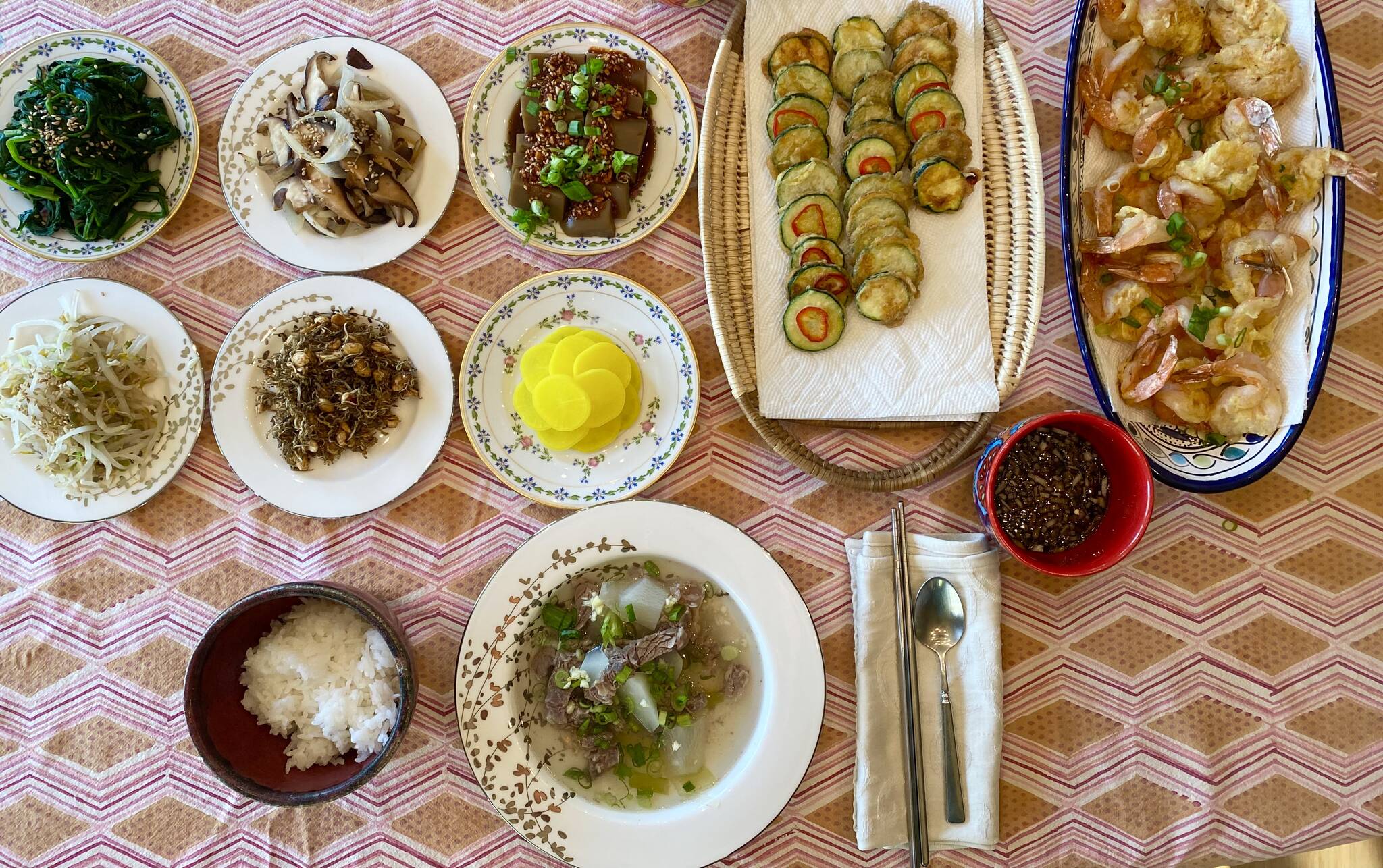Korean people all over the world celebrated Chuseok (CHOO-suk) this past Tuesday, Sept. 21.
The traditional Korean harvest festival dates to antiquity and pays homage to Korea’s ancient farming roots. The day is one of the two most important holidays of the year, the lunar new year being the other.
Chuseok is generally celebrated by traveling to hometowns to be with family, paying respects to ancestors by upkeeping gravesites and preparing elaborate offerings of food and wine, and by giving thanks for the year’s bounty and good fortune.
Just like the American Thanksgiving Day, Chuseok celebrations revolve around food. Many of the most beloved holiday dishes are time consuming and labor intensive, and often whole families will gather to share the load of kneading and chopping and frying to make the table spectacular for eyes and appetites alike.
Our celebration included nine dishes plus rice: seasoned spinach, sauteed mushrooms and onion, acorn jelly, seasoned mung bean sprouts, stir-fried dried anchovies and peanuts, pickled radish, fried zucchini, fried shrimp pancakes, and beef and radish soup.
None of these dishes, except the fried squash and seafood, are specifically holiday dishes, and the most quintessential of Chuseok dishes, filled dessert rice cakes steamed on a bed of pine needles, called songpyeon, were conspicuously and woefully absent … oh how I miss the Korean market in Anchorage. However, I’m sure none of these dishes would be unwelcome at a Chuseok celebration, and the beef and radish soup is a classic, beloved Korean meal.
Beef and radish soup
Ingredients:
½ of a large daikon radish, peeled and cut into pieces no thicker than ¼ inch
½ pound beef, brisket is best, cut into bite-sized pieces
3 tablespoons minced garlic
2 tablespoons fish sauce
3 stalks chopped green onion
4 pints water (8 cups)
Directions:
Boil radish around 10 minutes on medium-high heat.
Drop the heat to medium-low, add your beef and garlic, and simmer for 20 minutes. Try not to stir the pot or let the boil get too intense because if the meat is agitated too much you will end up with cloudy broth, which is not preferred in this soup.
Turn off the heat and add the green onion and fish sauce.
Cover and let sit for 5 minutes before serving.
This soup is very mild and is best served with an array of flavorful side dishes, but all you really need to enjoy it is kimchi and rice.
I worked all afternoon to make our table as elaborate as I possibly could, even though it was likely going to be just for the three of us, and my son only ate tofu and goldfish crackers (sigh).
I remember my teachers in language school telling me stories of holidays with a dozen women in the kitchen folding dumplings and doing dishes for massive gatherings, and one day I hope to serve a true feast for Chuseok, because all that work for a 10-minute dinner hardly seemed worth it at the time.
So, I was delighted to see my father-in-law come home, exhausted from a hard day, just in time for dinner. Dada took care of baby bath time, so I had the opportunity to chat with him about his day and to proudly explain the dishes that I worked so dutifully to prepare.
Our celebration wasn’t exactly a party, but we did enjoy some family bonding over a very special meal and made a happy memory together, and it made me very thankful for the family I have here with me.
Tressa Dale is a U.S. Navy veteran and culinary and pastry school graduate from Anchorage. She currently lives in Nikiski with her husband, 1-year-old son and two black cats.


